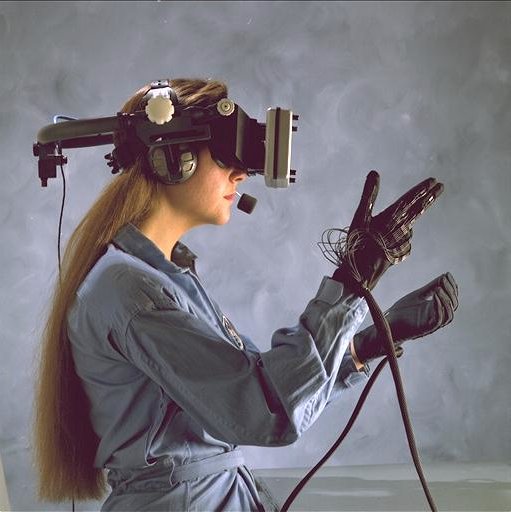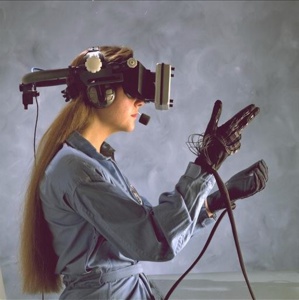Virtual and augmented reality (VR/AR) today is a dive into the digital world with the VR-helmet on the head, or a managed virtual projection (visible through special glasses) on the objects of the real world.
Technologies of immersion in virtual reality, as well as relevant content, are far from ideal and, of course, will be improved. However, China have decided that if the demand is already there, then it is necessary to ensure the proposal.
Modern immersion systems in three-dimensional environment are represented by two categories of devices: headsets with lenses, which is mounted smartphone projecting screen, and helmets with a private screen connected to a computer or game console.
It is believed smartphone-based devices do not give the full effect of virtual reality immersion, yet they are just right to get acquainted with the VR. Furthermore, such headsets are relatively inexpensive.
Chinese companies take the budget model Google CardBoard as the basis of their cheap VR-sets. Using plastic instead of cardboard, vendors from China are creating a simple design in the form of a helmet-mask, complemented by lens.
Analysts expect a surge of budget and middle priced models in the near future. Fortunately for consumers, prices will certainly fall. Chinese manufacturers are greatly interested in the development of virtual reality: it is the largest market with great potential. Many analysts compare VR/AR with the boom of the mobile market. According to forecasts, more than 1 billion different headsets will be delivered in the next 7-8 years.
Average-priced models allow connecting to the smartphone through the USB-interface, or viewing the VR-view content from the memory card. In addition, some virtual reality helmets from Chinese manufacturers come with their own LCD displays.
Now, the Chinese devices cannot compete with top solutions such as HTC Vive or Oculus. But, on the other hand, they cost way less, and at the same time allow to get acquainted with the technology.
However, there are interesting projects. One of the many Chinese manufacturers - Pico - presented an interesting variant of a VR helmet called Neo.
It comes with a gamepad using the top cell 820 Qualcomm processor, 4 GB of RAM, 32 GB of internal memory, Wi-Fi, Bluetooth and a slot for memory cards. This allows using the system without a smartphone. The helmet’s screen provides a resolution 1200 x 1080 for each eye, the distance between the pupils can be adjusted.
The helmet can be connected to a PC or be used with a gamepad. In addition to the traditional buttons, the gamepad is equipped with a multi-touch touchpad on the back side, gyroscope and accelerometer. Operating system is Android 6.0 Marshmallow with branded shell.
Another major Chinese high-tech company is Xiaomi: they did not dare to create its own VR-helmet yet, but are closely following the market. The company’s representatives, answering questions of journalists, often spoke about how they see the VR prospects in virtual reality. However, Xiaomi still takes a wait. The "Apple from China" still has a lot to do: the company produces a large enough range of goods, from televisions to tablets. Therefore, the decision not to rush headlong to the place without 100% successful example to follow is justified.
source: digitimes.com
Technologies of immersion in virtual reality, as well as relevant content, are far from ideal and, of course, will be improved. However, China have decided that if the demand is already there, then it is necessary to ensure the proposal.
Modern immersion systems in three-dimensional environment are represented by two categories of devices: headsets with lenses, which is mounted smartphone projecting screen, and helmets with a private screen connected to a computer or game console.
It is believed smartphone-based devices do not give the full effect of virtual reality immersion, yet they are just right to get acquainted with the VR. Furthermore, such headsets are relatively inexpensive.
Chinese companies take the budget model Google CardBoard as the basis of their cheap VR-sets. Using plastic instead of cardboard, vendors from China are creating a simple design in the form of a helmet-mask, complemented by lens.
Analysts expect a surge of budget and middle priced models in the near future. Fortunately for consumers, prices will certainly fall. Chinese manufacturers are greatly interested in the development of virtual reality: it is the largest market with great potential. Many analysts compare VR/AR with the boom of the mobile market. According to forecasts, more than 1 billion different headsets will be delivered in the next 7-8 years.
Average-priced models allow connecting to the smartphone through the USB-interface, or viewing the VR-view content from the memory card. In addition, some virtual reality helmets from Chinese manufacturers come with their own LCD displays.
Now, the Chinese devices cannot compete with top solutions such as HTC Vive or Oculus. But, on the other hand, they cost way less, and at the same time allow to get acquainted with the technology.
However, there are interesting projects. One of the many Chinese manufacturers - Pico - presented an interesting variant of a VR helmet called Neo.
It comes with a gamepad using the top cell 820 Qualcomm processor, 4 GB of RAM, 32 GB of internal memory, Wi-Fi, Bluetooth and a slot for memory cards. This allows using the system without a smartphone. The helmet’s screen provides a resolution 1200 x 1080 for each eye, the distance between the pupils can be adjusted.
The helmet can be connected to a PC or be used with a gamepad. In addition to the traditional buttons, the gamepad is equipped with a multi-touch touchpad on the back side, gyroscope and accelerometer. Operating system is Android 6.0 Marshmallow with branded shell.
Another major Chinese high-tech company is Xiaomi: they did not dare to create its own VR-helmet yet, but are closely following the market. The company’s representatives, answering questions of journalists, often spoke about how they see the VR prospects in virtual reality. However, Xiaomi still takes a wait. The "Apple from China" still has a lot to do: the company produces a large enough range of goods, from televisions to tablets. Therefore, the decision not to rush headlong to the place without 100% successful example to follow is justified.
source: digitimes.com






